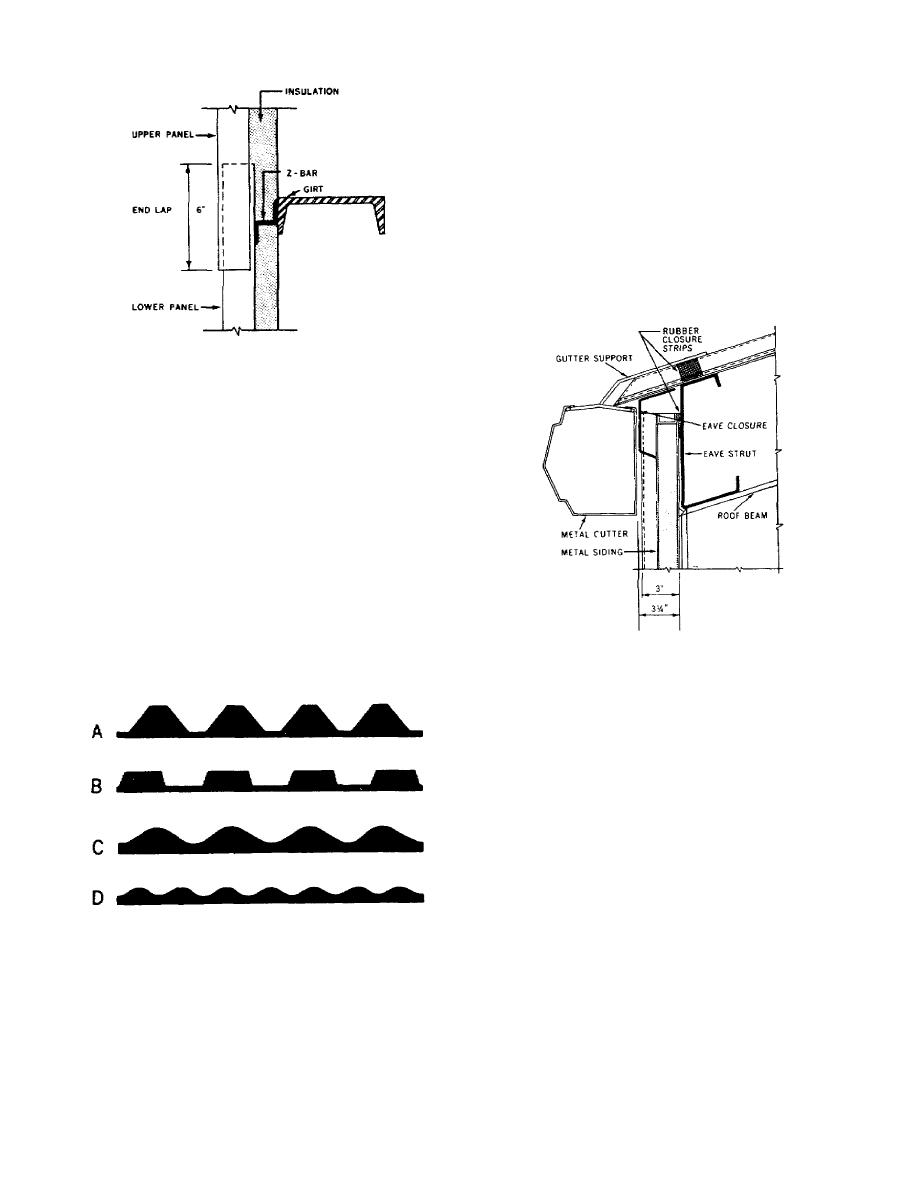
rubber seals, to close the space between the ribs of the
panel.
5-23. Figure 42 also illustrates the type of information
you can get from the master file of drawings in the
drafting section. This drawing shows a side view of each
part of the eave assembly. Each part is identified by
shape, name, size, or type of material. Check the
drawing file to locate hidden parts of the building so that
you can plan your work accordingly.
5-24. Sheet metal siding is fastened to the girts, base
angle, and eave strut or gable angle with self tapping
sheetmetal screw. When fastening steel to steel, you can
use steel screws or
Figure 40. End lap of exterior wall panel.
a wall, they are formed by lapping an upper panel over a
lower panel, as shown in Figure 40. A Z-shaped bar is
used at the girt where the splice is made. The metal
covering of the lower panel extends above the Z-bar, and
the metal covering of the upper panel laps over the lower
panel to form a 6-inch lap joint.
5-21. A solid rubber seal is used to make a waterproof
joint where ribbed panels overlap a smooth surface.
Figure 41 (A, B, C, and D) shows the shape of the rubber
seals used with roof and wall galvanized sheet metal
panels (A), aluminum ribbed panels (B), asbestos-cement
panels (C), and corrugated glass panels (D). The seals are
placed under the panel to prevent moisture from getting
between the panel and the smooth surface.
5-22. Special rubber seals may also be used at eave
struts, as shown in figure 42. Metal closure strips may be
Figure 42. Eave assembly.
needed, in addition to the
cadmium coated, rust resistant screws. These coated
screws are also used to fasten aluminum panels to steel
frames.
5-25. When aluminum panels are placed on a steel
frame, some type of separator must be used between the
different metals. This separator is usually provided by
coating the steel (area of contact) with an asphalt paint.
You can also use a layer of waterproof paper or asphalt
saturated felt as the separator.
5-26. In metal construction, it is frequently impossible
to prevent the contact of dissimilar metals. This contact
may result in the corrosion of one of the metals and the
protection from
Figure 41. Rubber seals.
23



 Previous Page
Previous Page
